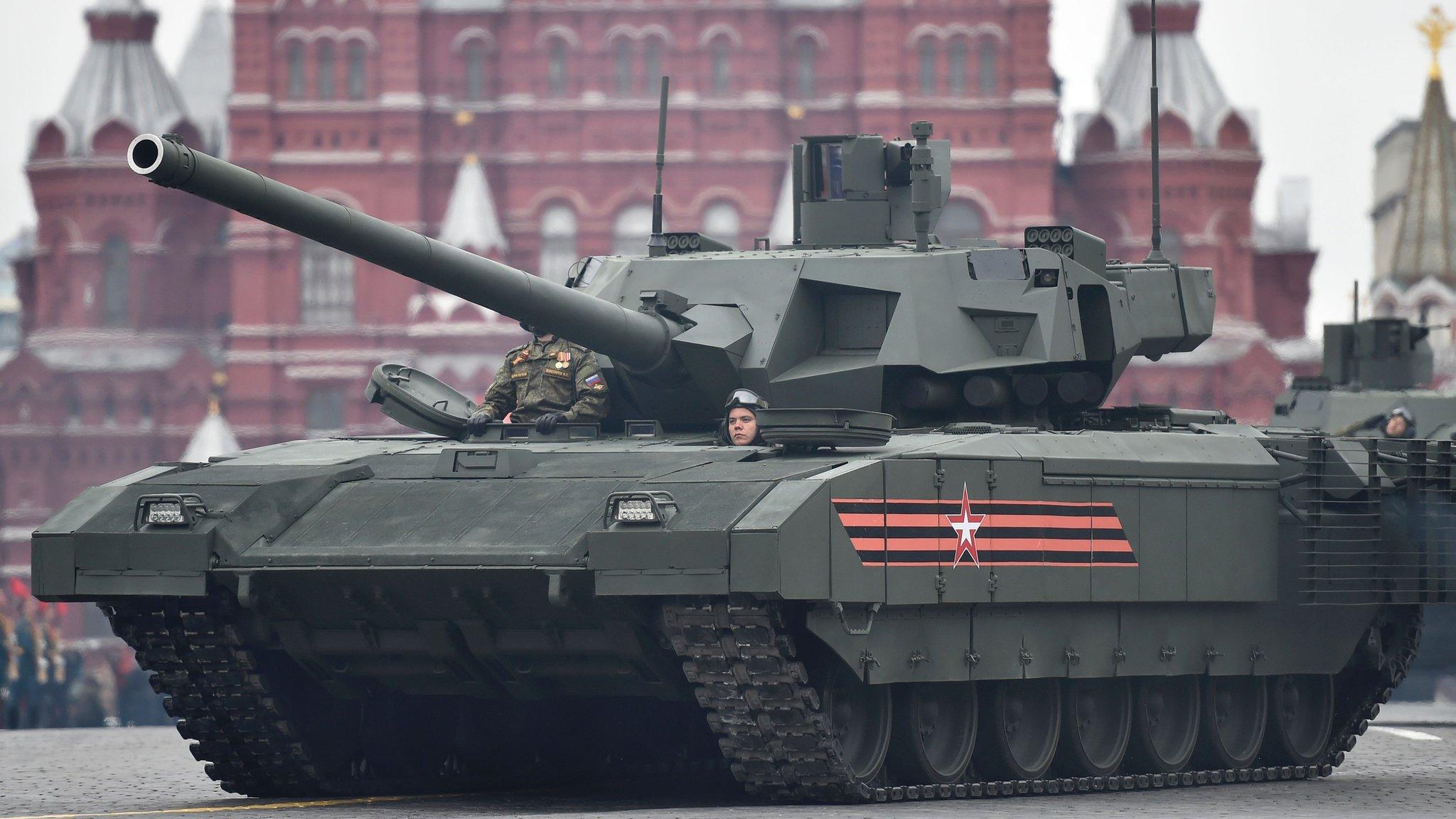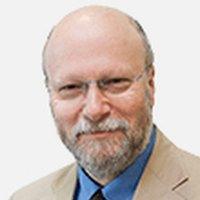Nato's painful homecoming
- Published
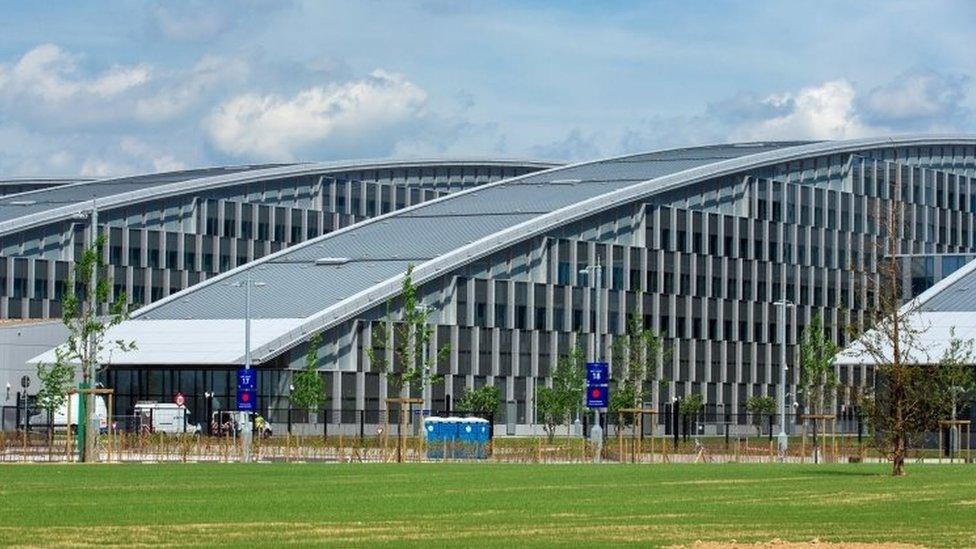
Nato's new headquarters in Brussels looks like several giant launch ramps
Past civilisations erected great monuments to show their power and influence, and in a sense Nato's brand new glass and steel headquarters building in Brussels is similarly intended to send a signal of the alliance's potency and relevance as tensions with a resurgent Russia once again dominate its agenda.
The building's sweeping lines - it looks like several giant launch-ramps or ski-jumps fused together - sends out a clinical message of modernity and efficiency.
It could be a high-tech company's global hub; the only difference being those parts of the building that probably extend underground. Nato is giving no tours there!
It stands in stark contrast to the old headquarters just across the road - a drab, low-rise building, that was a former Belgian military hospital.
It has been the alliance's headquarters since it was forced to move from Paris in the mid-1960s.
However, as the alliance expanded it became ever more crowded; patently unsuited to the job of hosting the 21st Century world's premier military and diplomatic alliance.
Mounting tensions
As Nato defence ministers gather here for their first meeting in the new building - the last ministerial before a crucial summit in early July, the main message the image-makers will want us to take away will be of a business-like organisation in its new business-like home.
But everything in the Nato garden is far from rosy.
With just weeks to go before the summit and President Donald Trump's second visit to the alliance, tensions are mounting.
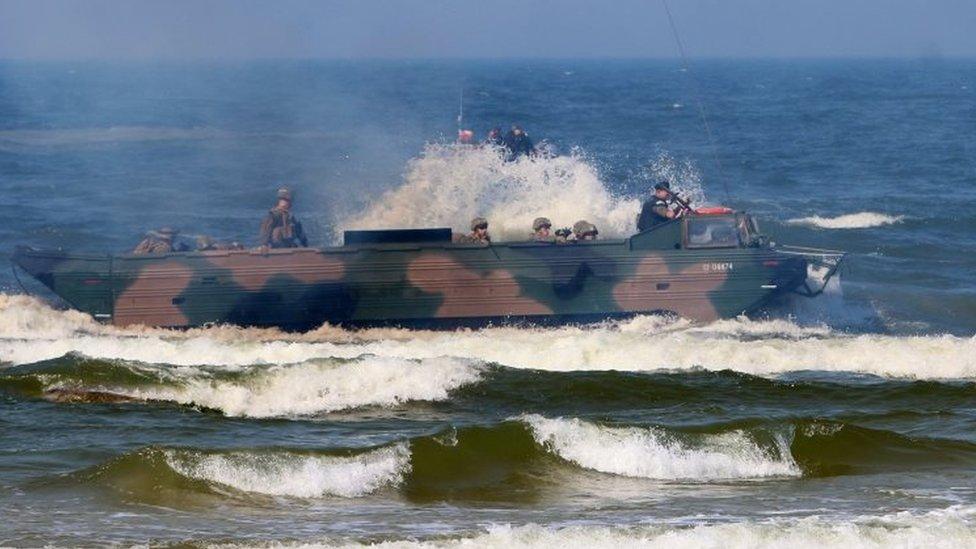
Nato troops are currently conducting maritime-focused military exercises in the Baltic
Europe and the US stand on the edge of an unpleasant trade war prompted by the Trump administration's decision to pull out of the nuclear deal with Iran and to threaten sanctions against any European companies who still hope to trade with Tehran.
Trans-Atlantic divisions over Iran are not the only problem.
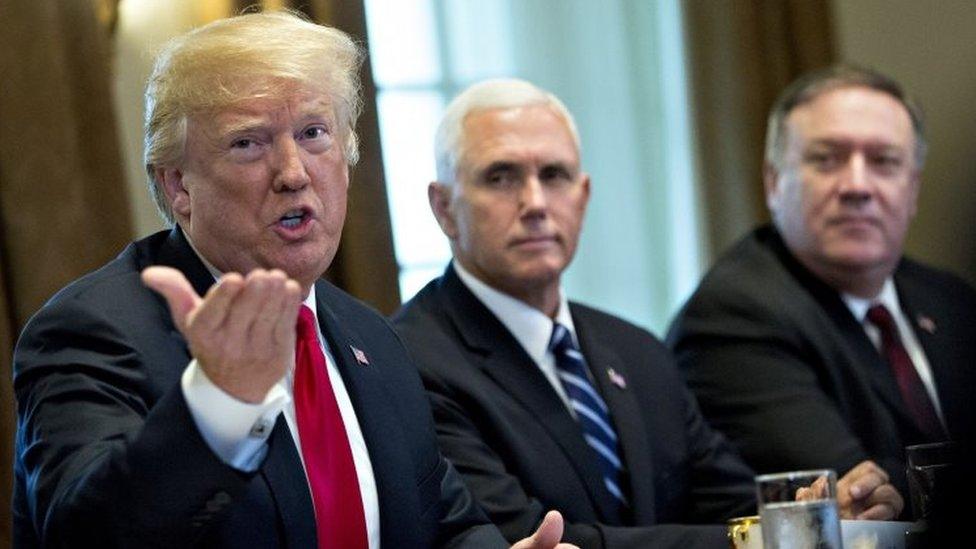
Donald Trump: The uncrowned leader of the Western alliance or a divider?
The US is said to be closer to imposing separate sanctions against German and other European energy companies in an effort to prevent construction of a pipeline to carry Russian gas across the Baltic.
The US decision to move its embassy in Israel from Tel Aviv to Jerusalem caused deep unease in many European capitals. Undiplomatic comments from the US ambassador to Germany talking about his desire to boost right-wing parties throughout Europe caused annoyance in Berlin and beyond.
President Trump looks less like the uncrowned leader of the Western alliance and more like a divider - his "America first" policy leaving little room for the sort of compromises that are essential to a healthy alliance with a collective sense of purpose.
And of course nobody knows which Donald Trump will turn up at the summit.
Will it be a benevolent leader championing US commitment to the defence of Europe while urging the Europeans politely to spend more on their military budgets?
Or will it be the Donald Trump who visited the old Nato headquarters in May of last year - a president who was blunt, appeared singularly ill-informed about Nato's budgetary processes and founding treaty and whose speech was met with barely-hidden sniggering from some key European leaders?
The Russian factor
If you then consider the tensions between the US and key Nato ally Turkey, which has recently been pursuing a partial tilt towards Moscow.
Now mix in the implications of the new government in Rome, which again has some curious attitudes towards Russia.
Then add the worrying schism within Europe between the "traditional" liberal democracies of the West and the increasingly harsh tones of "the populist democracies" of the East and you get a picture of an alliance riven with tensions.

President Vladimir Putin has warned the West not to cross "red lines", referring to Russia's national security interests
This is before one even begins to talk about Nato's core business - the collective defence of its members.
Some certainly overstate the nature of Russia's military threat to the West, but a threat of some kind is real enough.
Indeed, it may be less from Russian tank armies as of old and more to do with cyber-influence, information operations and propaganda war.
But it is a battle that has already been joined and - despite President Vladimir Putin's recent benevolent sounding statements directed at the EU - many will choose to judge Russia by its actions rather than its words.
Nonetheless, the precise nature of this Russian challenge and what Nato collectively must do to meet it also divides the alliance.
Countries like Poland and the Baltic Republics, with a very different historical relationship with Moscow, see a much more immediate threat than other Nato allies.
A trial balloon from the Polish ministry of defence asking for the deployment of a permanently-based US division on Polish soil seems to fly in the face of existing Nato policy and suggests that some at least in Warsaw are not convinced that the alliance's current approach is sufficient.
Those allies bordering the Mediterranean in Nato's south worry about Russia, But their biggest security threat remains the influx of people and instability from the Middle East and Africa - population movements which are becoming a key driver of political developments in a number of Nato countries.
The 'four 30s' plan
Either way, the summit will focus a good deal on "strength in depth", which makes a catchy slogan, but what does it really mean?
There's talk of Nato leaders agreeing to a new formula - "the four 30s" - a plan to be able to muster 30 mechanised battalions, 30 air force squadrons and 30 major warships within 30 days of the outbreak of any crisis.
But is this timeline really serious? Might it be too slow?
And given the lamentable readiness of Germany's armed forces for example, on paper one of the strongest countries in the Alliance, are such goals attainable or simply an aspiration?
Much also needs to be done to improve Nato's logistical support structure. For example, a key petroleum pipeline only extends as far as the old Cold War border between East and West Germany at the Fulda Gap.
Governments manage to employ a peculiar schizophrenia in the international system. Some might call it compartmentalisation. They agree in one forum whilst being at daggers drawn in another.
You will hear all sorts of statements that Nato is in rude health and busily adapting to the new challenges it faces.
In part this is true - at least in terms of the professional military and civil service. But no amount of spin can cover up the wider and multiple crises in the Nato family.
Pouring some balm on these tensions is what you would expect from a "normal" Nato summit and a "normal" US administration.
Is Mr Trump up to the task?
We will find out in a little over a month's time.
- Published1 April 2018
- Published20 September 2017
- Published25 May 2017

- Published25 May 2017
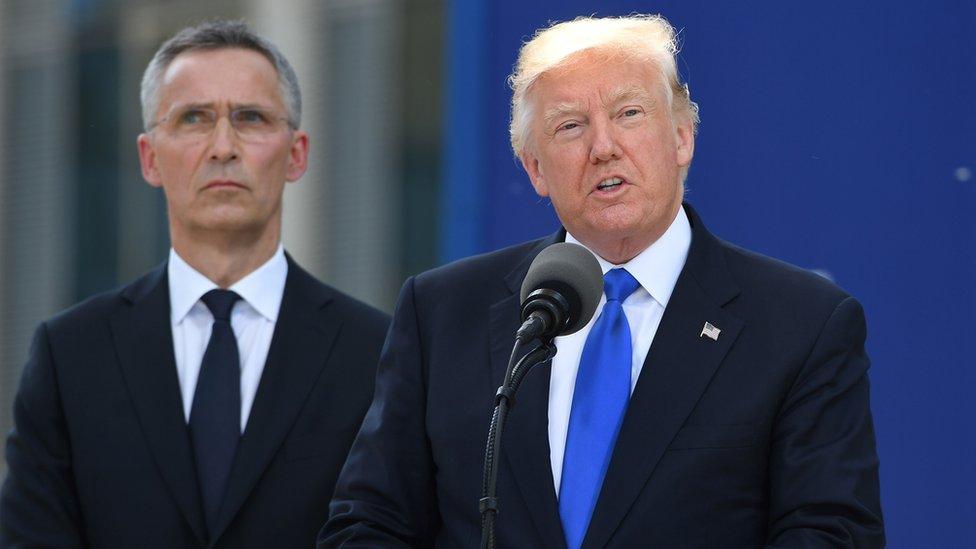
- Published17 March 2024

- Published22 January 2018
